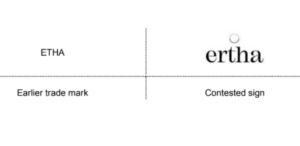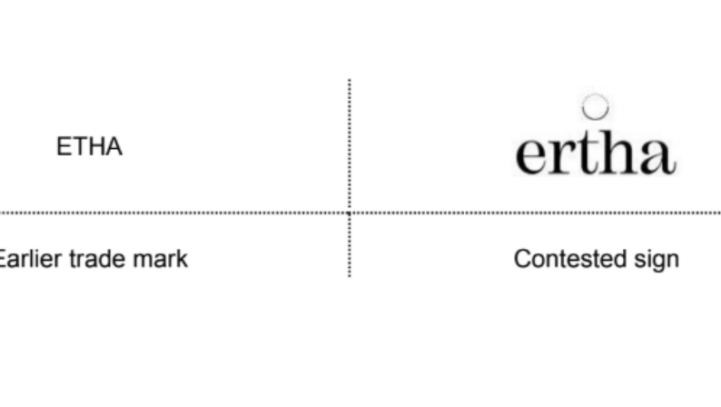A trademark dispute was adjudicated by the European Union Intellectual Property Office (EUIPO), in which “Фаст Трак” ЕООД was involved as an opponent, represented by IP Consulting. The dispute arrised over European Union Trademark (EUTM) application No. 18 408 531 for the figurative mark “ERTHA.” The claim of the opponent, supported by IP Consulting was that the mark conflicted with its earlier word mark “ETHA,” registered under No. 18 125 427, citing Article 8(1)(b) EUTMR—a likelihood of confusion.
The targeted goods by the opposition were in Classes 30 and 32 of the Nice Classification. Specifically, products such as coffee, tea-based beverages, and non-alcoholic beverages, which overlapped with the opponent’s broad claims under similar categories. The Opposition Division determined after a detailed examination, several contested goods to be either identical or highly similar, including tea substitutes, coffee, and seasonings. Nevertheless, other items like high-protein cereal bars were concluded dissimilar due to different natures.

“ETHA”, the earlier trademark and “ERTHA”, the contested trademark some visual and phonetic resemblance. Both contain the sequence “E-THA,” the only variation being in the additional letter “R”, which the contested mark contains. The figurative elements accompanying “ERTHA” were assumed to have minimal impact on consumer perception, emphasizing the verbal component has more significant influence. “When signs consist of both verbal and figurative components, in principle, the verbal component of the sign usually has a stronger impact on the consumer than the figurative component.”
According to the decision:
The relevant territory is the European Union.
The global appreciation of the visual, aural or conceptual similarity of the marks in question must be based on the overall impression given by the marks, bearing in mind, in particular, their distinctive and dominant components (11/11/1997, C-251/95, Sabèl, EU:C:1997:528, § 23).
As regards the contested sign, it is composed of the slightly stylised verbal element ‘ERTHA’ accompanied by a figurative element consisting of a circle located above the letters ‘T’ and‘H’, half of which is drawn with a solid line and the other half with a broken line. Neither element can be considered dominant; yet, it should be noted that when signs consist of both verbal and figurative components, in principle, the verbal component of the sign usually has a stronger impact on the consumer than the figurative component. This is because the public does not tend to analyse signs and will more easily refer to the signs in question by their verbal element than by describing their figurative elements (14/07/2005, T-312/03, Selenium-Ace / SELENIUM SPEZIAL A-C-E (fig.), EU:T:2005:289, § 37).
…….
Considering all the above, there is a likelihood of confusion on the part of the public.
The strong similarities led to findings of above-average visual and high phonetic similarity, though neither mark held conceptual meaning in the relevant territories. This overlap weighed heavily on the decision, as a particularly cruical factor was the average consumer’s imperfect recollection of trademarks.
The EUIPO concluded that a likelihood of confusion existed for some goods and the contested trademark application was partially rejected for products deemed identical or highly similar to the earlier mark.
This case shows the importance of assessing confusion, especially when competing trademarks share similar visual and phonetic characteristics.

